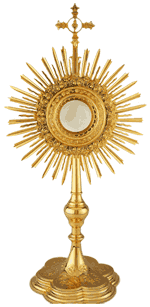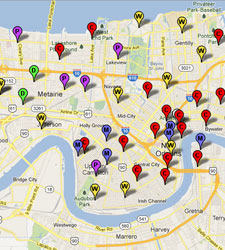The Holy Father’s New Encyclical, Lumen Fidei
A “hat trick” in sports is when an athlete accomplishes three outstanding feats in one game. The term originated in a cricket match in 1858 when a player hit three consecutive wickets, after which he was presented with a hat. On June 29, 2013 Pope Francis accomplished a “hat trick” of sorts when he announced the upcoming canonizations of Blessed Pope John XXIII and Blessed Pope John Paul II. What was the third accomplishment? Unfortunately, it took a back seat to the other two announcements, but it was the publication of his first Papal Encyclical, entitled “Lumen Fidei,” or “Light of Faith.” If you didn’t hear about it, it’s because the news focused so much on the two new saints. And that’s not surprising because these are the first Popes to be canonized since Pope Saint Pius X in 1954.
I would strongly encourage reading the encyclical, which can found very easily by typing “Lumen Fidei” in any web browser. While this space is not sufficiently long to summarize the document, I will try to hit a few points.
The encyclical opens: “The ‘light of Faith’: this is how the Church’s tradition speaks of the great gift brought by Jesus. In John’s Gospel, Christ says of himself: ‘I have come as light into the world, that whoever believes in me may not remain in darkness’ (Jn 12:46).” Christ is the light of faith – the “light of the world” – that allows all to see the truth of man’s existence and purpose of life. The encyclical follows with four eminently clear and easy-to-read sections to help us understand faith, each referring to a specific quote from Sacred Scripture: (1) “we have believed in love” (1 Jn. 4:15); (2) “unless you believe you will not understand (Is 7:9); (3) “I delivered to you what I have also received” (1 Cor. 15:3); and (4) “God prepares a city for them” (Heb. 11:16).
In the first section, the Holy Father (who freely admits that “four hands,” meaning his two and the two of Pope-emeritus Benedict XVI, wrote the encyclical) describes faith as a journey and a process of building. In order to journey and build, we must study those men of faith who preceded us. Noah built an ark and Abraham went on a journey, and each of them can help us as we journey and build our faith. Abraham entrusts himself to God’s word. “Faith understands that something so apparently ephemeral and fleeting as a word, when spoken by the God who is fidelity, becomes absolutely certain and unshakable, guaranteeing the continuity of our journey through history. Faith accepts this word as a solid rock upon which we can build, a straight highway on which we can travel.”
The call of Abraham, the sacrifice of Isaac, the twelve sons of Israel and the slavery in Egypt then set the stage for the Exodus when God chose a “mediator” between Himself and mankind in the person of Moses. “The people may not see the face of God; it is Moses who speaks to Yahweh on the mountain and then tells the others of the Lord’s will. With this presence of a mediator in its midst, Israel learns to journey together in unity. The individual’s act of faith finds its place within a community, within the common ‘we’ of the people who, in faith, are like a single person — ‘my first-born son,’ as God would describe all of Israel (cf. Ex 4:22). Here mediation is not an obstacle, but an opening: through our encounter with others, our gaze rises to a truth greater than ourselves.”
The encyclical then turns to Jesus, the mediator who opens to us to a truth greater than ourselves, the manifestation of God’s love that is the foundation of faith: “in contemplating Jesus’ death … faith grows stronger,” as He reveals His unshakeable love for mankind. His resurrection renders Christ a “trustworthy witness,” “deserving of faith,” through Whom God works truly throughout history, determining its final destiny.
The second section deals with faith and reason. “Faith without truth does not save, it does not provide a sure footing. It remains a beautiful story, the projection of our deep yearning for happiness, something capable of satisfying us to the extent that we are willing to deceive ourselves. Either that, or it is reduced to a lofty sentiment which brings consolation and cheer, yet remains prey to the vagaries of our spirit and the changing seasons, incapable of sustaining a steady journey through life.” The ultimate question of truth is not in material physical things, but in the question of God Himself. “An image of this seeking can be seen in the Magi, who were led to Bethlehem by the star (cf. Mt 2:1-12). For them God’s light appeared as a journey to be undertaken, a star which led them on a path of discovery. The star is a sign of God’s patience with our eyes which need to grow accustomed to his brightness.” Faith in the star led to truth. This echoes St. Anselm’s definition of theology: “faith seeking understanding.”
This chapter also focuses on the importance of evangelization. Someone who has opened oneself to God’s love cannot keep this gift for himself; the light of Christ shines on the face of Christians and spreads like a flame that ignites another, passing from generation to generation. In this chapter the Holy Father specifically mentions the Apostles, the Church, and the Sacraments. “It is through the Apostolic Tradition preserved in the Church with the assistance of the Holy Spirit that we enjoy a living contact with the foundational memory.”
The final chapter explains the link between faith and the common good, which leads to the creation of a place in which men and women may live together in peace. Faith, which is born of the love of God, strengthens the bonds of humanity and places itself at the service of justice, rights and peace. “Faith reveals just how firm the bonds between people can be when God is present in their midst. Faith does not merely grant interior firmness, a steadfast conviction on the part of the believer; it also sheds light on every human relationship because it is born of love and reflects God’s own love. The God who is himself reliable gives us a city which is reliable. … Absorbed and deepened in the family, faith becomes a light capable of illumining all our relationships in society. As an experience of the mercy of God the Father, it sets us on the path of brotherhood.”
But ultimately, faith is directed beyond this world. And here is where hope enters. “[F]aith is linked to hope, for even if our dwelling place here below is wasting away, we have an eternal dwelling place which God has already prepared in Christ, in his body.”
The encyclical closes with a prayer to the Blessed Mother, Mary, Mother of the Church and Mother of our faith: “Teach us to see all things with the eyes of Jesus, that he may be light for our path. And may this light of faith always increase in us, until the dawn of that undying day which is Christ himself, your Son, our Lord!”




